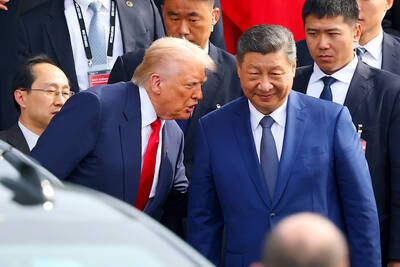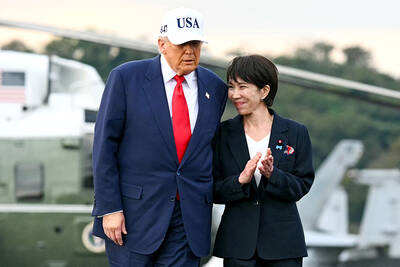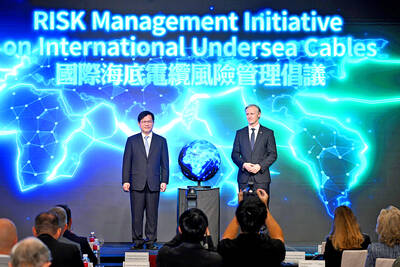Like the tides, the wave of good feelings that swept over Wall Street and Main Street with the Federal Reserve's big interest rate cut could ebb just as quickly.
Homeowners opening up statements for their adjustable-rate mortgages come next month will experience a jolt when the rates jump, but not as severe a jolt as it could have been.
And, Wall Street's mood swings -- reflecting bouts of panic and then some relief -- are expected to linger.
That is because the Fed's action, while perhaps providing some help, will not cure problems in the ailing housing market, which are still expected to drag well into next year.
It will take time for builders to work off a glut of unsold homes. That means the housing slump will continue to hold back the economy and probably lead to more job cuts in construction, manufacturing and other industries.
The Fed's action also won't stop home foreclosures and late mortgage payments from rising in the months ahead.
In a bold move, Fed Chairman Ben Bernanke and his colleagues on Tuesday sliced a key interest rate by half a percentage point to 4.75 percent. It was the first rate cut in more than four years.
Their aim is to prevent the economy from being thrown into a recession by a housing meltdown and a credit crunch. Lower rates should induce people and businesses to boost spending and investing, which would help energize economic activity.
Wall Street investors were cheered by the move, sending the Dow Jones industrial average zooming 335.97 points. It was the Dow's biggest one-day point jump in nearly five years.
Over the short term, the rate cut can provide an important psychological boost. It could make investors, businesses and others less inclined to clamp down or make drastic changes in their behavior that would hurt the economy.
"This does not heal the financial markets, but it can help in the process of healing. But we're not there yet," said Ken Mayland, economist at ClearView Economics.
The improved mind set, though, could turn out to be fleeting.
"I think the honeymoon is going to be pretty short for the euphoria of this Fed cut," said Greg McBride, senior financial analyst for Bankrate.com. "A half-point cut can only do so much. It doesn't transform the housing market into sunshine and daffodils."
The housing market is suffering through its worst slump in 16 years. Home sales are expected to keep on sagging. Home prices, which saw double-digit gains in many areas during the boom, have cooled off significantly. Affordability is still an issue for would-be home buyers, experts say.
Pain will continue to be felt by borrowers, lenders and investors of "subprime" mortgages -- higher-risk loans made to people with spotty credit or with low incomes.
Analysts estimate that 2 million adjustable-rate mortgages will jump from very low initial teaser rates to higher rates this year and next. Steep prepayment penalties have made it difficult for some to get out of their mortgages. Some overstretched homeowners can't afford to refinance or even sell their homes.
The Fed's action does provide a bit of relief. For owners facing a reset on Oct. 1, their new rate will rise to 6.75 percent, versus 7.50 if it had reset a few months earlier, McBride said.
"The payment is still going up by hundreds of dollars a month. So people are not going to feel warm and fuzzy," he said.
For consumers, whose confidence has been rattled by the housing and credit problems, much turns on whether employment conditions continue to deteriorate.
The economy lost 4,000 jobs last month, the first decline in four years. The unemployment rate, now at 4.6 percent, is expected to climb close to 5 percent by the end of the year. A softening job market eventually will probably mean slower wage growth.
Howard Chernick, economic professor at Hunter College, doesn't think the Fed's rate cut will make people rush to the malls.
"Consumer spending is influenced by employment and wages," Chernick said. "Aside from the euphoria some might now feel, I don't think there is going to be a big effect."
It will take months for the Fed's rate cut to ripple through the economy, with the hope that it will bolster activity.
Analysts expect the economy to slow to a rate of about 2 percent in the current quarter. That would be just half the pace of the previous three months.

CALL FOR SUPPORT: President William Lai called on lawmakers across party lines to ensure the livelihood of Taiwanese and that national security is protected President William Lai (賴清德) yesterday called for bipartisan support for Taiwan’s investment in self-defense capabilities at the christening and launch of two coast guard vessels at CSBC Corp, Taiwan’s (台灣國際造船) shipyard in Kaohsiung. The Taipei (台北) is the fourth and final ship of the Chiayi-class offshore patrol vessels, and the Siraya (西拉雅) is the Coast Guard Administration’s (CGA) first-ever ocean patrol vessel, the government said. The Taipei is the fourth and final ship of the Chiayi-class offshore patrol vessels with a displacement of about 4,000 tonnes, Lai said. This ship class was ordered as a result of former president Tsai Ing-wen’s (蔡英文) 2018

UKRAINE, NVIDIA: The US leader said the subject of Russia’s war had come up ‘very strongly,’ while Jenson Huang was hoping that the conversation was good Chinese President Xi Jinping (習近平) and US President Donald Trump had differing takes following their meeting in Busan, South Korea, yesterday. Xi said that the two sides should complete follow-up work as soon as possible to deliver tangible results that would provide “peace of mind” to China, the US and the rest of the world, while Trump hailed the “great success” of the talks. The two discussed trade, including a deal to reduce tariffs slapped on China for its role in the fentanyl trade, as well as cooperation in ending the war in Ukraine, among other issues, but they did not mention

Japanese Prime Minister Sanae Takaichi yesterday lavished US President Donald Trump with praise and vows of a “golden age” of ties on his visit to Tokyo, before inking a deal with Washington aimed at securing critical minerals. Takaichi — Japan’s first female prime minister — pulled out all the stops for Trump in her opening test on the international stage and even announced that she would nominate him for a Nobel Peace Prize, the White House said. Trump has become increasingly focused on the Nobel since his return to power in January and claims to have ended several conflicts around the world,

GLOBAL PROJECT: Underseas cables ‘are the nervous system of democratic connectivity,’ which is under stress, Member of the European Parliament Rihards Kols said The government yesterday launched an initiative to promote global cooperation on improved security of undersea cables, following reported disruptions of such cables near Taiwan and around the world. The Management Initiative on International Undersea Cables aims to “bring together stakeholders, align standards, promote best practices and turn shared concerns into beneficial cooperation,” Minister of Foreign Affairs Lin Chia-lung (林佳龍) said at a seminar in Taipei. The project would be known as “RISK,” an acronym for risk mitigation, information sharing, systemic reform and knowledge building, he said at the seminar, titled “Taiwan-Europe Subsea Cable Security Cooperation Forum.” Taiwan sits at a vital junction on